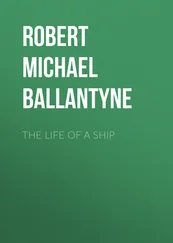Under the forecastle, Boyle had sealed off the main deck towards the bow with a solid bulkhead, beyond which were his crew’s quarters. The remainder of the previously open deck was now divided into three sections: a men’s ablution area, a central married quarters and, aft, the area for single women. This also now incorporated two new ‘hospitals’ or sick bays, the women’s situated at the rear of the single women’s quarters and the men’s adjacent to their ablution area near the bow. At equidistant points, narrow gangways led down to the lower deck. This too had been similarly renovated with another single men’s area in the bow and a larger married quarters taking up midship and the stern. The gangways linked the ship’s two main areas for married people and their families, as well as the lower men’s area with the male ablution section. There was also a new ‘teacher’s room’ for group reading and lessons, and a ‘matron’s room’ where the young women could be given their own lessons, though these were of a somewhat different nature to the men’s.
With the prevailing belief, before the advent of modern medicine, that sickness and disease were largely airborne, great care had been taken by Boyle to ensure the flow of fresh, ‘clean’ air throughout his ship. Lattice wooden bulkheads had therefore been installed rather than solid wood, as well as another innovation, wind sails. [1] Haines, 2005, p. 171
This basic air-conditioning system was similar to those found in mines, whereby vents on the open upper deck scooped up fresh air and distributed it throughout the ship’s large and complicated interior. In rough or stormy weather, however, when the passengers arguably needed fresh air the most, they would be disengaged.
As well as the gangways, which themselves aided ventilation, extra openings had also been fitted between the decks. One of them, opening the single women’s area to one of the married quarters below it, had steel bars bolted across it at 6-inch intervals to prevent any interaction between the two. Such was the morality of the times. Although believed to be imperative to good health at the time, this deliberate opening up of the ship’s internal passages would, later in the voyage, allow the free circulation of something far more sinister than simply fresh air.
To bring at least some light into the lower deck, Boyle had 10-inch diameter windows or scuttles cut through to illuminate the stern area, with more situated 12 feet apart right around the deck. To enhance what light there was, the ship’s entire interior had been covered in several coats of whitewash. By far the largest task undertaken by Boyle’s carpenters, however, was the fitting of the Ticonderoga ’s system of wooden bunks, which needed to be constructed and installed in their hundreds. Like some vast, two-tiered filing system, they were hammered, bolted and dowelled, piece by piece, around the ship’s solid centre, whence they emanated like rows of wooden petals. New straw-stuffed mattresses were provided for each, as were new blankets. For hygiene, passengers were forbidden from bringing on board bedding of their own. These bunks, however, were small and narrow, and separated by just 3 feet from the next. This, in fact, was more space than the mere 2 feet of space between bunks as stipulated by the Passengers Act . A flimsy wooden wall protected modesty to some extent, and a thin curtain could be drawn across the foot of each bunk, but privacy on board the ship barely existed.
The Ticonderoga also exceeded the prescribed headspace between decks, as laid out in the Act that in 1852 had been amended by parliament but that had not come into effect by the time she sailed. A mere 6 feet of headspace between decks of emigrant ships due to sail through the tropics was all that was required by law, but the Ticonderoga exceeded this with a clearance of 7 feet, 10 inches in her main deck, and 6 feet, 11 inches in the lower. [2] Kruithof, 2002, p. 25
She was, however, still awfully dark. Despite Boyle’s renovations, it was simply not possible for light to penetrate the ship’s interior. Even on bright days, the lower deck in particular was a place of perpetual gloom, the strong but thick glass of the scuttles allowing for little more than a hazy, green-tinted illumination. In particular, those passengers allotted the lower bunk on the lower deck were destined to spend a large part of the voyage in a perpetual night. This is one of the reasons, it has been suggested, that no passenger diaries have survived from the Ticonderoga ’s journey. Even among those literate enough, there was little light by which to write them.
Deeper into the ship, underneath her second deck, were the Ticonderoga ’s holds, inside which her crew of 48 had been toiling for many days, loading the tremendous amount of stores that would be required to keep nearly 800 people alive for the next three months and more. This being virtually the longest voyage that any ship of the time was capable of undertaking—close to the farthest distance from one point on the globe to another, and with no scheduled stops along the way—provisions were chosen more for their qualities of long-term preservation than their nutrition. Although the Ticonderoga ’s journey was expected to last between 80 and 90 days, provisions to last 120 days were taken on board; hence her holds needed to be big. Among the larger items she would carry would be:
• 520 barrels (being the equivalent of 48, 711 pounds) of navy bread—a type of hard, simple biscuit
• fifteen tierces of ‘India mess’ or preserved beef (‘tierce’ being an antiquated unit of measurement amounting to 42 imperial gallons), plus 47 tierces of India pork
• 50 barrels of split peas
• 53 barrels of ‘finest raw sugar’ amounting to 10,496 pounds
• 27 barrels of rice
• 120 boxes of raisins
• eight casks (580 gallons) of mustard
• five ‘puncheons’ (7418 pounds) of treacle
• nineteen casks of pickles.
Added to this list were considerable stores of tinned foods (still a relatively new and not entirely trusted innovation), such as soup and bouilli (stewed or boiled meat), raw coffee, preserved potatoes, beef suet, pepper and salt. [3] British Parliamentary Paper Relative to the Australian Colonies, no. 15, April 1, 1853
On private vessels on which passengers paid their own way, the luxury of live animals could be included for fresh meat on the voyage. This was not so for the assisted emigrants of the Ticonderoga . Fresh water was also an essential item, and one notoriously difficult both to transport and preserve. The Passengers Act allowed for just over three and a half litres to be provided per passenger per day, and on the upper deck of the Ticonderoga , Captain Boyle had installed several large wooden water casks, into which he had pumped nearly 353,000 litres from the Mersey River, which he aimed to keep fresh with the addition of charcoal. Nevertheless, it would struggle to remain so on the long journey to Australia.
The diets of the Scots and Irish differed slightly but significantly from those of the English, in that potatoes and oatmeal were considered staples. Potatoes, however, were not easy to keep, even in their ‘preserved’ form, which basically amounted to placing them in jars filled with earth or ash and storing them in the coolest place possible on the ship. With regard to the Scots and their diet, the Passengers Act ruled that three and a half pounds of oatmeal be provided to every passenger embarking from a Scottish or Irish port. Though leaving from England, Captain Boyle insisted that such provisions of oatmeal were provided for all his Gaelic passengers.
Читать дальше












